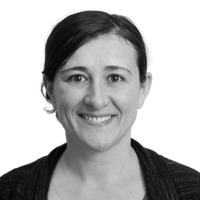Cell

Deputy Section Chair:
Ari Sadanandom
(Durham University)

Section Chair:
Ross Sozzani
(North Carolina State University)
The SEB Cell Section is at the heart of the SEB as cell biology is central to modern experimental biology. We bring together knowledge, techniques and application from animal, plant and fungal systems with the vision to learn across kingdoms and to promote development at the forefront of our field. We have a particular interest in supporting –and learning from- early career scientists and we welcome suggestions for meetings where breakthrough science and emerging technologies are presented. To achieve this, the Section Committee comprises pure and applied, animal, plant and fungal cell biologists from around the world.
The Cell Section has a number of special interest groups covering different areas of cell biology that you are welcome to join. These interest groups help to organise sessions at our Annual Conference and our Symposia. Each interest group is headed by a group convenor, and the group convenors make up the SEB Cell Section Committee.
Below is the list of cell biology interest groups, use the button below to log in to the members' area and join a group:
Cell biology interest groups
Cellular Function
Convenor: Monica Pradillo Orellana (Universidad Complutense de Madrid)
The Cellular Function Group is interested in how information is processed in living cells. This includes understanding how cells perceive stimuli, how information regarding the nature of the stimulus is encoded in cells, how this information is processed and then decoded by the cell to lead to the appropriate end response.
These mechanisms are important in many different biological contexts, such as a bacteria responding to nutrients, yeast to hormones, human cells to drugs and plant cells to environmental stress. The aims of the group are to elucidate the key cellular components that are important in such signalling pathways and in particular resolving the major conundrum of how specific information is encoded in cells.
Key players in cellular function include receptors and effector proteins, proteins involved in post-translational regulation, as well as second messengers such as calcium and reactive oxygen/nitrogen species and the group is active in all these areas. Apart from being academically important, the identification of key players in cellular function will allow better drug design for human health, antibiotics against harmful microbes and targeted breeding for crops with improved stress tolerance, all grand challenges for the 21st century.
Emerging Technologies
Convenor: Joseph McKenna
The Emerging Technologies interest group promotes meetings to explore the development and application of novel methods and technologies in any aspect of cell biology in the broadest sense with the widest application.
With the vision that future advances in bioscience research lie in developing and combining new approaches in imaging, omics and functional interaction, this new interest group seeks to bring together technical experts and research scientists.
The primary focus of this group will be on the application of advanced techniques to biological questions and their ability to yield new insight.
Modelling and in silico biology
Co-convenors: Leah Band (University of Nottingham) and George Bassel (University of Warwick)
Over recent decades, we have gained detailed knowledge of many processes involved in plant and animal biology. However, with this knowledge comes increasing complexity and a pressing need for mechanistic modelling and in silico techniques to uncover how those individual processes interact.
There are many ways in which modelling and in silico biology are now major players in the field of Experimental Biology. Through this special interest group, the SEB promotes the use of these techniques. For instance, one major challenge is to relate genotypes to phenotypes, requiring researchers to move beyond the molecular and cellular scales, and use multiscale modelling to predict emergent dynamics at the tissue and organ levels.
Progress in this area will be crucial as biological research moves from a qualitative to an increasingly quantitative understanding of plant and animal systems, employing predictive tools that accelerate the development of, for example, improved crop varieties.
Nuclear and Chromatin Dynamics
Convenors: Katja Graumann (Oxford Brookes University, UK), Christophe Tatout (Université Clermont Auvergne- France)
The Nuclear and Chromatin Dynamics special interest group aims to be a platform for researchers interested in nuclear biology across eukaryotic kingdom. Core research themes include:
- molecular trafficking into and out of the nucleus through the Nuclear Pore Complex
- dynamic, composition and function of the Nuclear Envelope
- linkages between nucleoskeleton and cytoskeleton and role in nuclear movement
- organisation of chromatin domains in nuclear space
- composition and function of nuclear bodies
- positioning of the nucleus relative to other cellular components
The Nuclear and Chromatin Dynamics Group fosters research into structural nuclear components and their role in the regulation of nuclear dynamics and morphology, chromatin organization, gene expression, development and interaction with the environment in various eukaryotic systems.
This group promotes state of the art technologies and multidisciplinary approaches including microscopy, image analysis, chromatin domain mapping, genomics, bioinformatics and phenotyping.
Cytoskeleton and Cytosolic Organisation Group
Convenor: Mike Deeks (University of Exeter)
The cytoskeleton is a dynamic network of protein filaments within cells that provides structural support, facilitates cellular movement, and orchestrates intracellular transport processes. It serves as the cell's scaffolding, maintaining its shape and enabling crucial functions such as cell division and organelle positioning
Synthetic Biology and Industrial Biotechnology Group
Interim convenor: Vacant
The Synthetic Biology and the Physical Cell Group is interested in uniting many different aspects of cell biology to gain an understanding and insight into what happens physically to cells during their life and look at how to exploit this using the tools available from synthetic biology.
There is a strong focus on a multidisciplinary approach to the challenge bringing together biologists (both plant and animal cell experts), physicists, engineers, mathematicians and chemists to unravel the complex process taking place within cells, and learn how to manipulate these to create non-natural systems (e.g. for manufacturing products of interest or creating new living entities).
Crucial to this process is obtaining high quality information about the cell structure and the dynamic nature of the process contained within each cell so imaging plays a crucial role at the start of the process.
By then linking this with an understanding of the localised biochemistry, it is possible to construct multidimensional models of the process involved, frequently using mathematics as the language. From such models predictions can be made from this holistic approach to physical cell biology.
Current Vacancies
There are currently no vacancies in the Cell Section.
Check back again soon or email [email protected] to register your interest for future roles.
Members are welcome to submit proposals for sessions at the SEB Annual Conference and for symposia and satellite meetings.
